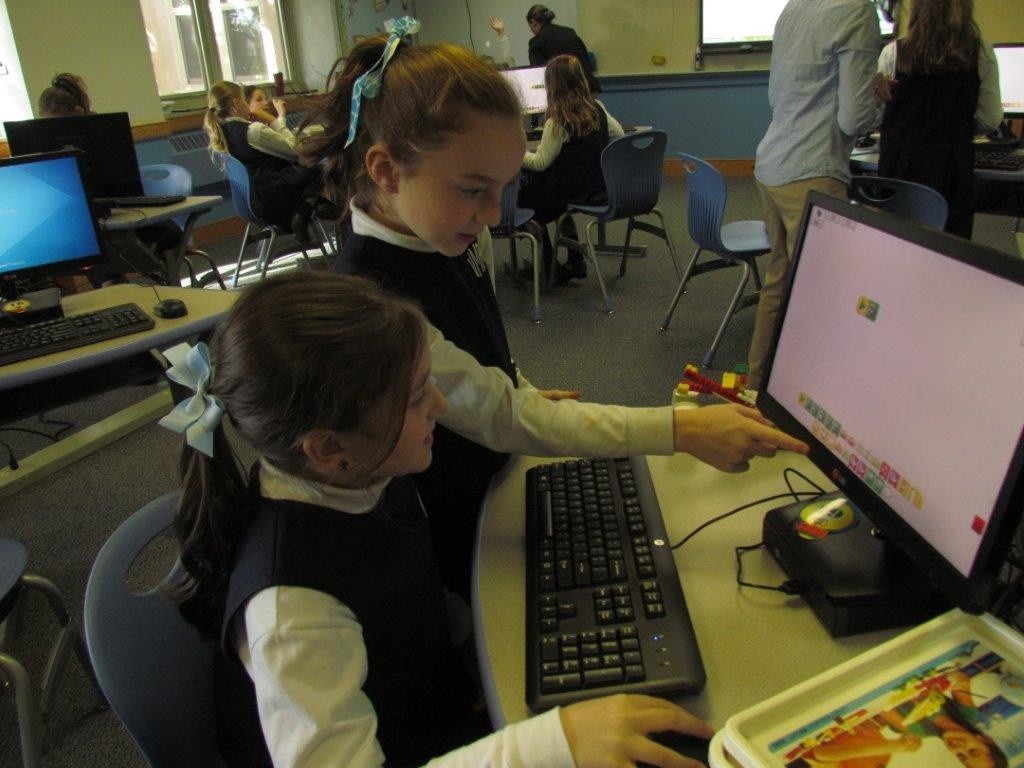This post was contributed by Sister Jo-Ann Abate IHM, Technology Consultant/Instructor at Elwyn Non-Public Services Programs.

(Pictures from Villa Maria Academy)
The first introduction of the Star Wars series gave us a robot that immediately became a much loved favorite to generations of fans known as R2D2. This little droid was chock full of all sorts of tools and capabilities. It is the ship’s repair mechanic, it rescues the princess; it reassembles other robots, such as, C-P3O and has the desirable attributes of spontaneity, affability and loyalty.
Those of us who have seen Star Wars: The Force Awakens know that R2D2 is also being joined by a newer, smarter android, BB-8.
BB-8 is a droid robot that is being hunted for the secret map it contains. The really great thing about BB-8 is that the creator, Spero, designed it with the intentions of having it in every home! How perfect is that for all our students? In this age of robotics, when teachers everywhere are introducing their students to the importance of STEM in the classroom, a classic Hollywood movie sets the stage and stimulates the appetite for robotics in education.
It will not be the first time Hollywood has inspired science. Star Trek introduced the laser beam which was developed for the medical use in laser surgery. The artificial intelligence of the android “Data” is now a reality. It just might be the BB-8 robot that gets robotics truly off the ground in every classroom, not just in the computer lab.

Schools all over the country recognize this need and are trying to incorporate robotics into their curriculum. Teachers are teaming up with local businesses to aid them with project expenses and materials. One such school in Massachusetts is incorporating it into their literature curriculum. Students work to solve a problem from a novel they read. They select a character and problem, then, discuss a solution. They apply the solution by creating a robotic prototype to perform specific functions. Using Legos, sensors, egg cartons, gears, pipe cleaners and wiring motors the students build their robots. They have partnered with Tuff’s University, in which engineering challenges are plucked from the plots of assigned books. The elementary school lesson plan, developed at Tufts’ Center for Engineering Education and Outreach, is backed by the National Science Foundation. It is quite an interesting project and challenge. This project uses plots from books by Roald Dahl, Judy Blume, and others to teach STEM concepts.
The effects of STEM pervade every aspect of our daily lives. We see it in the designing of our roads, bridges, buildings, transportation systems, appliances, environment, ecosystems and in improving our life styles and homes. Students need to be taught about how much STEM effects them. They should be encouraged to take courses in science, mathematics, technology and engineering in high school and college. This is not just for the boys. Girls as well need to be encouraged to excel in these areas. Teachers should have professional development to dispel any fears or lack of knowledge about how to build and program robots. Most of all teachers should exhibit enthusiasm in the activities of the teachers that give their time to working with the students. Educators need to remind themselves that STEM is the key to continued innovations and future scientists not just for a few, but for the welfare of us all!
NCEA has professional development offerings expanding STEM education using the STREAM model: Science, Technology, Religion, Engineering, Arts and Mathematics. Learn more about our STREAM 2.0 Symposium http://www.ncea.org/events/stream-20-symposium and register online. If you would like to share STREAM resources or share your good news story about STREAM education in your school, contact Andrea Kopp: Manager of Educational Resources at [email protected].